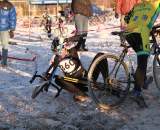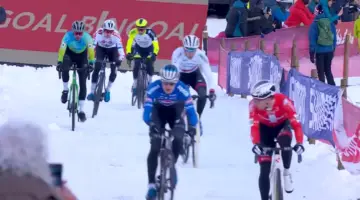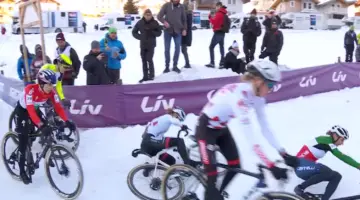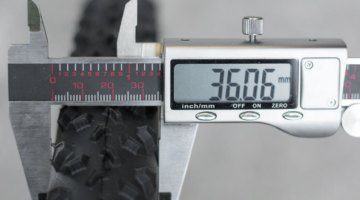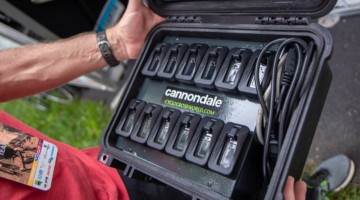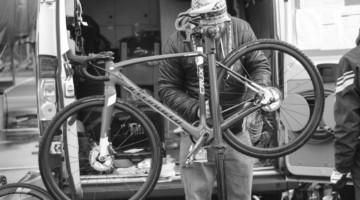Like we said last week, whether you’re a noob to cyclocross or a seasoned pro, you will crash in a cyclocross race at some point or another. [Ed. note: ee “Is Joey OK?” for an illustration.] Last week, Jason Gardner walked us through before you remount, the few things you should take a second to check before getting back into the race. A few seconds of looking over your bike can save precious minutes in the grand scheme of the race, since if you remount only to realize you’ve dropped a chain or your brake is rubbing, you’ll just have to stop again. This week, Brett Rothmeyer takes us through a post-crash inspection that should happen after your race is over, whether you finished the race or had to pull out after your crash.
by Brett Rothmeyer
So you’ve had a tough weekend of racing the ol’ ’cross bike around in the dirt, perhaps a real tough weekend and you found yourself on the ground at some point during the racing. Crashing in ’cross is fine; in fact, it happens a fair amount. From the beginners to top level pros, everyone crashes. A good friend and fellow racer once said to me, “If you don’t crash every now and again, you’re probably not racing hard enough. ” The thing about crashing in ’cross is that it is usually at lower speeds than you would find on the road course, and the landing is generally a bit softer.
But now that the race is over and you have had time to collect yourself, it’s time to check out your bike to make sure everything is ready for your next race or ride. First, I would start with making sure the bike has been cleaned well. Remember: a clean bike is a happy bike.
Next, I would put in a workstand or take it to your local shop so they can give it a once over. Having done a fair amount of crashing in ’cross races myself, I usually start with the rear derailleur, looking closely to make sure that the hanger isn’t bent. A bent hanger can lead to awful shifting and the possibility of destroying the whole rear end of your bike by over shifting into your rear spokes. If you don’t posses a derailleur hanger tool, your local shop certainly will, and they will be more than happy to help you out.
The wheels are generally the next of the vulnerable components on your bike, so check to make sure they have not been knocked out of true by your fall. This is also an easy fix, if you have the proper tools. If you are the kind of racer who is attracted to fancy bike parts and you happened to outfit your rig with carbon bars, you probably will want to unwrap them and check the bars for any cracks or damage. I have seen my fair share of cracked carbon bars at ’cross races and it does not look like a fun way to have your day ended. Bar tape is cheap, dental work is not.
Lastly, if you have a carbon frame, check it over as well to make sure everything is OK and there are no cracks from the impact. Carbon frames these days are pretty sturdy but better safe than sorry. Most of the damage or mechanical issues suffered from the crash will probably make themselves known right away, but it is always good to go over it thoroughly to save yourself headaches and unnecessary crashes in the future.
Now get out there, push some tape and don’t fear the reaper.













